#nemasket
Explore tagged Tumblr posts
Text

The marke of Tasomockon (Tuspaquin)
Wampanoag. Their homelands at Nemasket and Assawompset (in the areas today called “Middleboro” and “Lakeville, Massachusetts”).Their mark appearing here on a document dated 1651, and signed also by Ousamequin, the Massasoit, and Ousamequin’s son, Wamsutta (later also called Alexander).
Tuspaquin’s kin: son of Pamontaquask. A partner, Amie (daughter of Ousamequin), their sons, Benjamin and Wiliam Tuspaquin.
This is our second post on Tuspaquin, whose mark is different across the two documents (dated 1651 and 1664) we’ve so far explored.
Seen at Massachusetts State Archives.
#tuspaquin#sachem#wampanoag#nemasket#assawompset#massachusetts#theirmarks#17thcentury#17c#massstatearchives#algonquian#easternwoodlands#nativehistory
18 notes
·
View notes
Photo

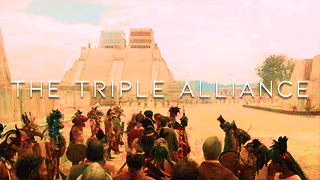
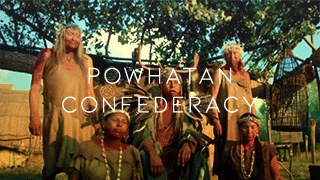
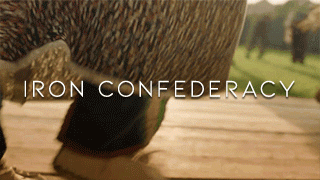
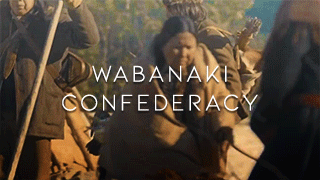
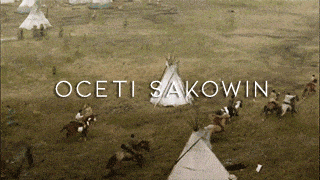
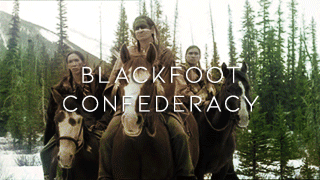
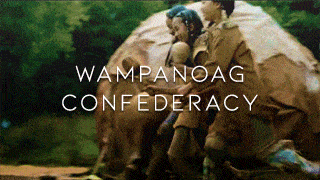
Native American Confederacies:
Haudenosaunee: Also known as the Iroquois Confederacy or the Six Nations, consist of the Mohawk, Onondaga, Oneida, Cayuga, Seneca, and later, Tuscarora. They were formed prior to European contact, and their form of government started by the Great Law of Peace was used as a Model for that of the United States Constitution. Oral tradition suggests the confederacy was formed before an eclipse circa the early 12th century.
The Triple Alliance: Later known as the Aztec Empire, was formed in 1428 under the leader Itzcoatl, wherein the Mexica formed a three-way alliance with the Texcocans and the Tacubans to defeat their most powerful rivals for influence of the region. They later became a dominant force ruling over multiple tribes and political factions until the invasion by the Spanish.
Powhatan Confederacy: Created in the late 16th century, was founded by Paramount Chief Wahunsenacah (Father of Matoaka, also known as Pocahontas), affiliating some 30 tribes in Virginia, creating the Powhatan Confederacy. Each tribe was led by a weroance that paid tribute to the Paramount Chief and allied together politically, economically, and militarily. Affiliated tribes included the Pamunkey, Patawomeck, Quiyoughcohannock, Chesapeake, Appomattock, Kiskiak, Mattaponi, Rappahannock, Werowocomoco, and more.
Iron Confederacy: political and military alliance of individual tribes against common enemies, membership included the Cree, Stoney, Metis, Saulteaux, and Nakota. It is unknown when it was first founded, but it existed at the arrival of settlers during the early 17th century and likely was created earlier.
Wabanaki Confederacy: Made up of the Mi’kmaq, Maliseet, Passamaquoddy, Penobscot, and Western Abenaki, this alliance was formed due to the common enemy of the English colonizers, whom they would go to war with in the First Abenaki war, which was then ended with the Treaty of Casco. They incorporated political elements from neighboring confederacies, such as the use of wampum for treaties, and they have their own symbol for the alliance.
Oceti Sakowin: known as the Seven Council Fires, (Titunwan, Yankton, Yanktonai, Mdewakanton, Wahpeton, Wahpekute, & Sisseton) is and was an alliance of Peoples divided into 3 ethnic groups, the Lakota, the Eastern & Western Dakota. Around 1300 AD, after years of moving from their ancestral lands of the central Mississippi Valley region, they adopted the characteristics of a northern tribal society and became known as the Seven Council Fires. Their battles against colonizers are some of the most well known, such as the Battle of Little Big Horn.
Blackfoot Confederacy: Is made up of 4 Nations with the same language. The Nations have their own governments, but banded together in political, spiritual, and social alliance. The affiliated tribes are the Siksika, Kainai, Peigan, and Pikani, and later, Tsuu T’ina was added to the confederacy. Their territory stretched from along the North Saskatchewan River in Canada to the Yellowstone River in Montana, and within the Rocky Mountains. They were known as a formidable alliance, often going to war with the Iron Confederacy.
Wampanoag Confederacy: Once a loose Confederation in the early 17th century, now one consisting of 10 tribes, are and were an alliance of multiple Peoples in Southern Massachussetts and Rhode Island, including the Chappaquiddick, Nantucket, Mashpee, Patuxet, Assawompsett Nemasket, Pocasset, Pokanoket, Nauset, Herring Pond, and Aquinnah. Being located on the Eastern coast of the United States, they were some of the first to meet colonists in the United States, and suffered casualities of illness, and resisted Colonization such as with King Phillip’s war.
#historyedit#native american history month#native american history#ndn#indigenous history#blackfoot#wampanoag#oceti sakowin#iron confederacy#powhatan#triple alliance#wabanaki#haudenosaunee#iroquois#justin's edits
1K notes
·
View notes
Link
1 note
·
View note
Text
Pilgrims didn't win!
Pilgrims didn’t win!

The Wampanoag met the Pilgrims and survived!
Mashpee Wampanoag Tribe (federal 300 acres) 3,000, Mashpee, Cape Cod.
Wampanoag Tribe of Gay Head (federal 485 acres)1,000, Aguinnah, Martha’s Vineyard.
Herring Pond Wampanoag Tribe (state) Plymouth –this group literally met the Pilgrims.
Assawompsett-Nemasket Band of Wampanoags (state) Fall River, Massachusetts
Pocasset Wampanoag Tribe…
View On WordPress
0 notes
Photo






Nemasket Hill Cemetery 2016
Pentax K1000
#ntsouprake#graveyard#burial#burialground#cemetery#flag#union#joinordie#ancient#grave#graves#tomb#blackandwhite#film#pentax#pentaxk1000#35mm#b&w#photography
9 notes
·
View notes
Photo

Squabetty, where Squanto led Stephen Hopkins and Edward Winslow across the Taunton River at a Nemasket fishing weir. #walktopokanoket #wampanoag #stephano #stephenhopkins #shakespearesshipwreck (at East Taunton, Massachusetts) https://www.instagram.com/p/B6ErSdTH86D/?igshid=l5tcjtqrkyg4
0 notes
Photo

Canoeing the mighty Nemasket with Ben, Ed and Ryan, 2016 #ipad #ipaddrawing #ipadart #art #artistsoninstagram #drawing #massachusetts #pleinair #canoe https://www.instagram.com/p/B0atag3Bgx0/?igshid=62m6cnzej63c
0 notes
Text
Gilles Deleuze and Felix Guattari have written in an essay called ''May, 1914. One of Several Wolves?": "The proper name (nom propre) does not designate an individual: it is on the contrary when the individual opens up to the multiplicities pervading him or her, at the outcome of the most severe operation of depersonalization, that he or she acquires his or her true proper name. The proper name is the instantaneous apprehension of a multiplicity. The proper name is the subject of a pure infinitive comprehended as such in a field of intensity."
Thoreau once wrote to a friend: "Have you ever observed how many of the Indian names of rivers, lakes, &c., end in et? Assawampset, Acushnet, Pascaamanset, &c., &c. I am informed by a person who appeared to have some knowledge of Indian words that et signifies water the Taunton river was called Nemasket for several miles from its outlet from the Middleborough Pondsthen Tetiquet or Tetiquid. Now I come to my object did not your Musketaquid have the final syllable quet?
Sir Humfrey Gilbert wrote in A New Passage To Cataia: "To proove that the Indians aforenamed came not by the Northeast, and that there is no thorow passage navigable that way."
Work penetrated by the edge of author, traverses multiplicities, light letters exploding apprehension suppose when individual hearing
Every name driven will be as another rivet in the machine of a universe flux
— Susan Howe, Singularities
41 notes
·
View notes
Video
instagram
Show us that you checked in at one of our locations on Facebook or tagged us in an Instagram or Facebook post and get 5% off your July 4th rental. #independenceday #4thofjuly #kayaking #sup (at Nemasket Kayak Center)
0 notes
Text

Paempohut alias Joseph. his mark.
Presumably Wampanoag, their homelands at Nemasket and Assawompset (in the areas today called “Middleboro” and “Lakeville, Massachusetts”)
This document, identified as the last will and testament of “Pamontaquask the pond sachem” asserts that it was Pomontaquask’s desire that all the lands “at Assawamsett or elsewhere…” be transferred to “....tuspaquin alias the Black Sachem” and after tuspaquin’s death, onto “Soquontamouk alias William his son…”
Poemphut is a signer to the document, but is not mentioned in the text. Presumably, Poemphut had ties to Tuspaquin (who does not sign this document). After Pamontaquask’s death, Tuspaquin becomes sachem at Nemasket, and is married to Amie, daughter of Osamequin.
Signed October, 1668. Seen at the American Antiquarian Society.
#paempohut#wampanoag#nemasket#tuspaquin#Pamontaquask#hismark#theirmarks#easternwoodlands#nativehistory#17thcentury#massachusetts#americanantiquariansociety#algonquian
1 note
·
View note
Link
http://prints.dgportfolio.net/featured/nemasket-river-ii-bw-david-gordon.html #artforsale #prints #homedecor #interiordesign #wallart #blackandwhite #DaveGordon
1 note
·
View note
Text
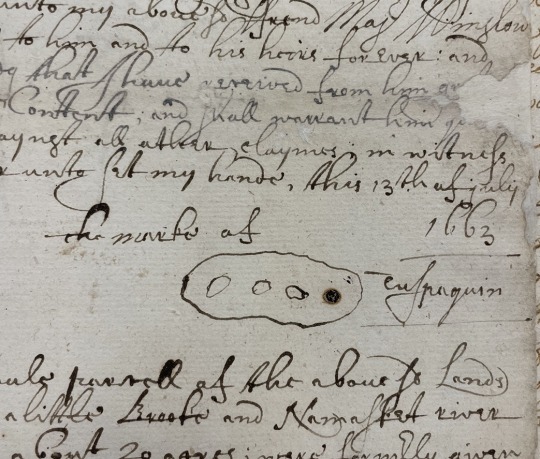
The Marke of Tuspaquin.
Wampanoag, at Nemasket and Assawompset (in the areas today called “Middleboro” and “Lakeville, Massachusetts”). In this signed document, discussing land at Nemasket, Tuspaquin identifies as “Tuspaquin (alias) the Black Sachem of Namassakat.”Fought alongside Pometacom in the First Indian War (or Metacom’s War, or King Philip’s War), and was executed by colonizers in September, 1676.
Tuspaquin’s kin: son of Pamontaquask. A partner, Amie (daughter of Ousamequin and sister of Pometacom and Wamsutta), their sons, Benjamin and WIliam Tuspaquin.
Deed signed July 13, 1663. Seen at the American Antiquarian Society.
#tuspaquin#sachem#wampanoag#nemasket#assawompset#massachusetts#theirmarks#17thcentury#17c#americanantiquariansociety#algonquian#easternwoodlands#nativehistory#pometacom#ousamequin
1 note
·
View note
Link
http://www.dgportfolio.net/nemasket-river-iii-bw/ #artforsale #prints #wallart #blackandwhitephotography #DaveGordon
0 notes
Link
http://prints.dgportfolio.net/featured/nemasket-river-iii-bw-david-gordon.html #artforsale #prints #wallart #blackandwhitephotography #DaveGordon
0 notes